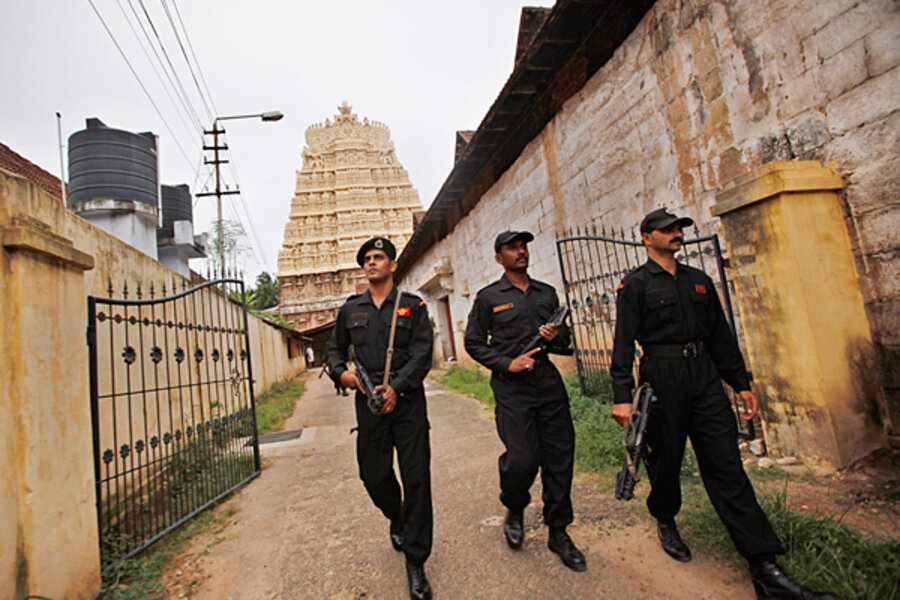$22 billion in gold, diamonds, jewels found in Indian temple's secret vaults
Loading...
| New Delhi
It's a find worthy of a "Raiders of the Lost Ark" plot line: Jewels, gold trinkets, coins, and statues worth an estimated $22 billion were uncovered in a series of secret vaults beneath a Hindu temple in the southern Indian city of Thiruvananthapuram.
The loot includes about 1,000 kilograms (2,205 pounds) of gold coins – some dating back 400 years – ropes of gold, sacks of diamonds, and a gold statue of the Hindu god Vishnu studded with precious gems, as well as an 18-foot solid gold ornament weighing 35 kilograms (77 pounds) and rare silver and brass platters.
So far the find is worth nearly double India’s 2011-2012 education budget ($11.61 billion) – and there's still another vault to be unlocked. The 16th century Sri Padmanabha temple, in the capital of the southern coastal state of Kerala, is now considered to be the richest of India’s temples.
So just where did the riches come from?
The temple is controlled by descendants of the royal family of Travancore, the former princely state of the region. It is believed the former rulers donated much of their wealth to the temple, where it lay in safe keeping for decades. Offerings by the many worshippers making pit stops there along the global trade routes probably also contributed to the treasure.
It was no stumbled-upon find, however. While the vaults have been kept under lock and key for around 150 years, the wealth has been on the public record.
Still, the officials who unlocked the vaults said they were surprised about what they found inside – and the value of it. A seven-member delegation was tasked with opening the chambers after a local lawyer filed a petition with the court, suspicious that the fortune was not being adequately protected by the temple’s governing body.
Debate is now brewing over just what should be done with the fortune, given the millions of Indians who live in poverty. Hindu leaders want it invested into the temple, but many others are calling for it to be used for the public good. The state government insists it will let the temple keep the riches, and will even provide permanent security to safeguard it.
“The wealth of the temple will rest with the temple itself,” wrote Kerala Chief Minister Oomen Chandy on his website.
There are also calls for it to be plowed into Kerala’s crumbling economy. Despite having one of the highest literacy rates in India, the southern state lacks major industry, and its biggest form of income is in the form of remittances from the global Keralan diaspora.
Though it's still unclear what will become of the religious money, for now, with the hordes of curious visitors descending upon the town, the haul could have gains for at least one key industry in the state – tourism.





